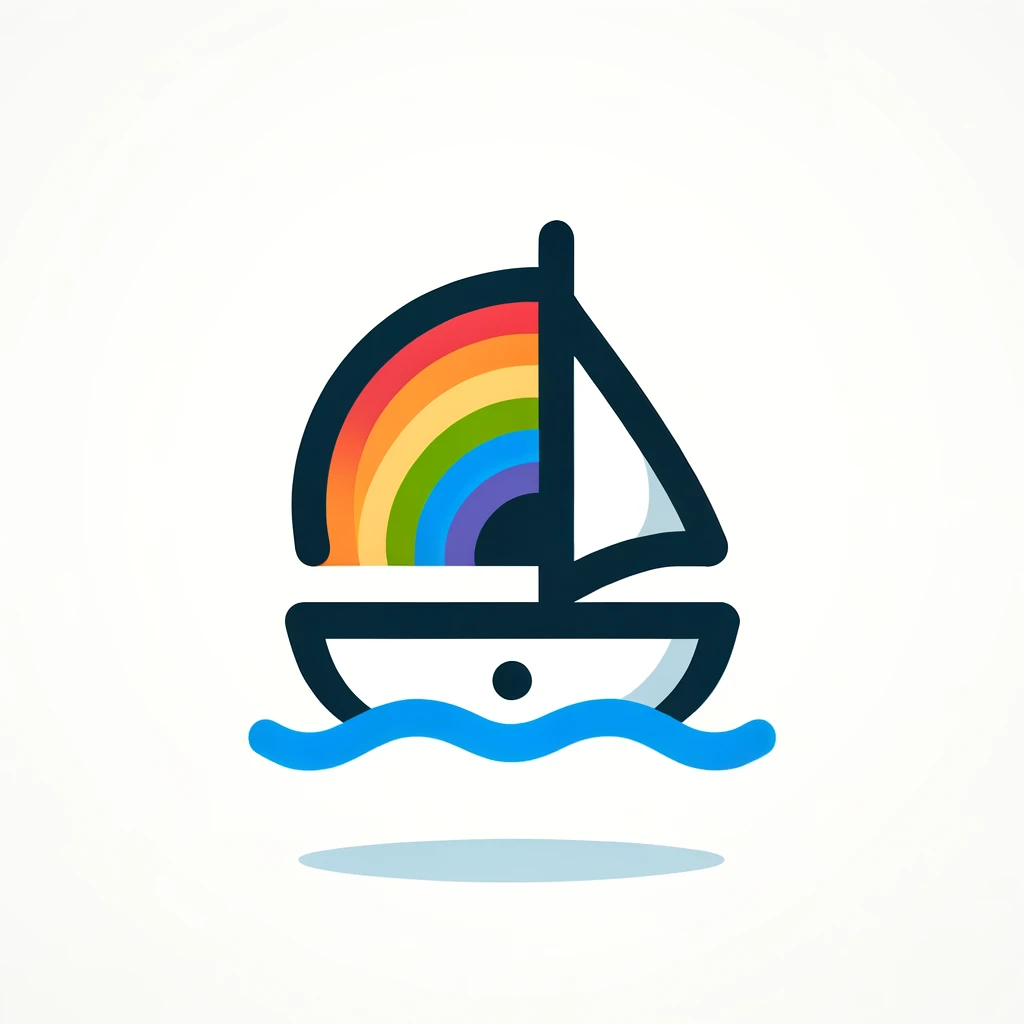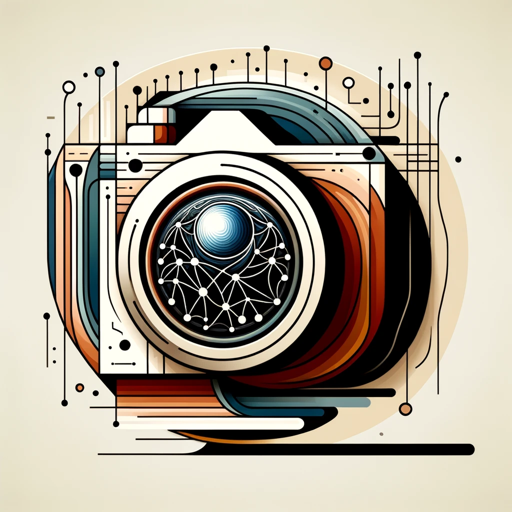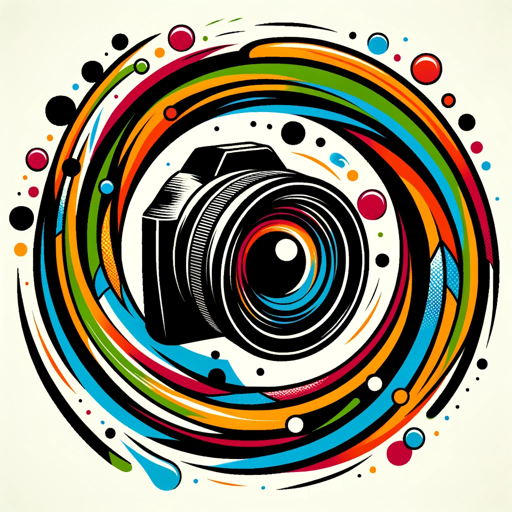Image Name Echo & Bounce-AI-Powered Image Generation Tool
Evolve Your Visual Ideas with AI Precision
Upload a circular pattern for analysis
What does this polar graph represent?
/name and describe this circular image
/echo the previous description with Dall-E image generation
/bounce this image to get new description
/image single image or combine named images into one integrated image image-to-image generation.
Related Tools
Load More
Simple Image Prompt Maker
Quickly and simply create image prompts. Please enter your image concept.#GPTs "Let's all play together at chat.openai.com" 🎉 #ChatGPT #GPTbuilder #promptshare

Image Prompt Genius
IPG - Extracts image high-quality prompts from given keyword(s) or description, and generates the images for you.

Prompt Creator
Drag and drop your image to generate a Midjourney Prompt | by Design Maverick

Reverse Image Engineer
Provide an image and get the DALL-E prompt to generate it. Reverse prompt engineering.

Gecko Tech Image Replicator
Generates unique image replicas and creates new images

Image Explainer
I describe and explain uploaded images, focusing on details and avoiding personal identification.
20.0 / 5 (200 votes)
Introduction to Image Name Echo & Bounce
Image Name Echo & Bounce is an advanced AI-based tool designed to assist in naming, describing, and generating images based on visual content. Its primary function revolves around analyzing images, providing unique and descriptive names, and iteratively generating new images that echo the content of previous ones. The system is built to facilitate a deeper exploration of visual creativity, enabling users to engage in a dynamic process where images evolve through successive iterations of descriptions and re-creations. For example, consider a scenario where a user uploads an abstract image of swirling colors. Image Name Echo & Bounce would first generate a unique name for the image, such as 'Swirling Vortex of Colors,' and then provide a detailed description focusing on the patterns, color interplay, and overall composition. If the user requests an echo, the tool would create a new image based on this description, perhaps altering the color scheme or introducing new elements, and then offer a new description and name for the generated image. This iterative process allows for continuous refinement and exploration of visual ideas.

Main Functions of Image Name Echo & Bounce
/name
Example
A user uploads an image of a sunset over a mountain range. The tool names it 'Sunset Over Majestic Peaks' and provides a detailed description, highlighting the gradient of colors in the sky, the silhouette of the mountains, and the reflection in a nearby lake.
Scenario
This function is useful for cataloging images, creating alt tags for web content, or simply providing a detailed analysis of an image's content. Artists, photographers, and digital creators can use this function to enhance their work's presentation.
/echo
Example
Using the 'Sunset Over Majestic Peaks' image, the user requests an echo. The tool generates a new image that might feature the same mountain range under a starry night sky, or with a different color palette for the sunset, and provides a new name and description for this altered image.
Scenario
The /echo function is ideal for iterative creative processes, where a user wants to explore different variations of an image. Designers and content creators can use this to experiment with different visual ideas before settling on a final version.
/bounce
Example
After generating several iterations of an image, the user decides to treat the latest one as an entirely new piece. The tool names the image 'Nighttime Over Silent Mountains' and describes it independently of the previous versions.
Scenario
This function is useful when a user wants to shift the creative process in a new direction, treating the latest iteration as a standalone concept. It is particularly beneficial for artists and designers who need to pivot their creative direction based on evolving ideas.
Ideal Users of Image Name Echo & Bounce
Digital Artists and Designers
These users benefit from the tool's ability to generate and refine visual content iteratively. The naming and descriptive functions help in organizing and presenting their work, while the echo and bounce features allow for exploration of different artistic directions.
Content Creators and Marketers
Content creators and marketers can use Image Name Echo & Bounce to generate compelling visuals for their projects. The tool's detailed descriptions and iterative image generation help in creating unique and engaging content that can be tailored to different campaigns and audiences.

Guidelines for Using Image Name Echo & Bounce
1
Visit aichatonline.org for a free trial without login, also no need for ChatGPT Plus.
2
Start by uploading or describing the images you wish to analyze or generate. Use the /name command to assign clear and concise names to your images, ensuring easy reference throughout the process.
3
Utilize the /echo command to create new images based on the descriptions you provided or the visual elements of a named image. This allows iterative refinement of image concepts, enabling a deeper exploration of the visual themes.
4
Apply the /bounce command to treat the generated image as a new and independent artwork, providing fresh analysis and description. This step ensures you explore new perspectives on each iteration.
5
Combine elements from multiple images using the /image to image command, blending their features to create complex, unified artworks. Experiment with different commands to optimize your creative process.
Try other advanced and practical GPTs
Earth Engine GPT
AI-Powered Assistance for Geospatial Analysis

DevGPT: General Code Writer (windows)
AI-powered code writing, simplified.

Link in Bio Creator 😎 Personal Page in 2 min
AI-powered personal link in bio creator

Image to Idea from Merch Momentum
AI-Powered T-Shirt Design Inspiration.

AI Photonics Expert
AI-powered insights for photonics experts.

HiBreed: The Brand Brief Builder
AI-Powered Brand Insights & Strategies

App Sheet Pro Assistent
AI-Powered Guidance for AppSheet Developers

Power Point Maker
AI-Powered PDF to PowerPoint Converter

Network Commands Buddy
AI-powered tool for network switch configurations

Case Study Analyst
AI-Powered Insights for Case Studies
AutonomousStoryWeaver
AI-Powered Story Crafting Made Easy

Learn Chinese Character
AI-powered Chinese character mastery.

- Creative Design
- Image Analysis
- Abstract Art
- Visual Refinement
- Iterative Creation
Frequently Asked Questions About Image Name Echo & Bounce
What is the main purpose of Image Name Echo & Bounce?
The main purpose is to analyze and describe images with high precision, generate new images based on detailed descriptions, and refine the creative process through iterative commands like /echo and /bounce.
Can I use Image Name Echo & Bounce for abstract or complex images?
Yes, the tool is well-suited for analyzing and generating abstract or complex images. It focuses on visual elements, geometric motifs, and thematic content, making it ideal for exploring intricate designs.
How do I ensure that the images generated align with my creative vision?
Use the /echo command iteratively to refine images based on detailed descriptions and visual elements. You can also use the /image to image command to blend features from multiple images, aligning the output with your vision.
Is it possible to use this tool without an existing image?
Absolutely. You can start with a detailed textual description, and Image Name Echo & Bounce will generate an image based on that. You can then iterate and refine using other commands like /echo.
What are the prerequisites for using this tool effectively?
No specific prerequisites are required. However, a basic understanding of image composition, design elements, and iterative creative processes will help you maximize the tool's potential.